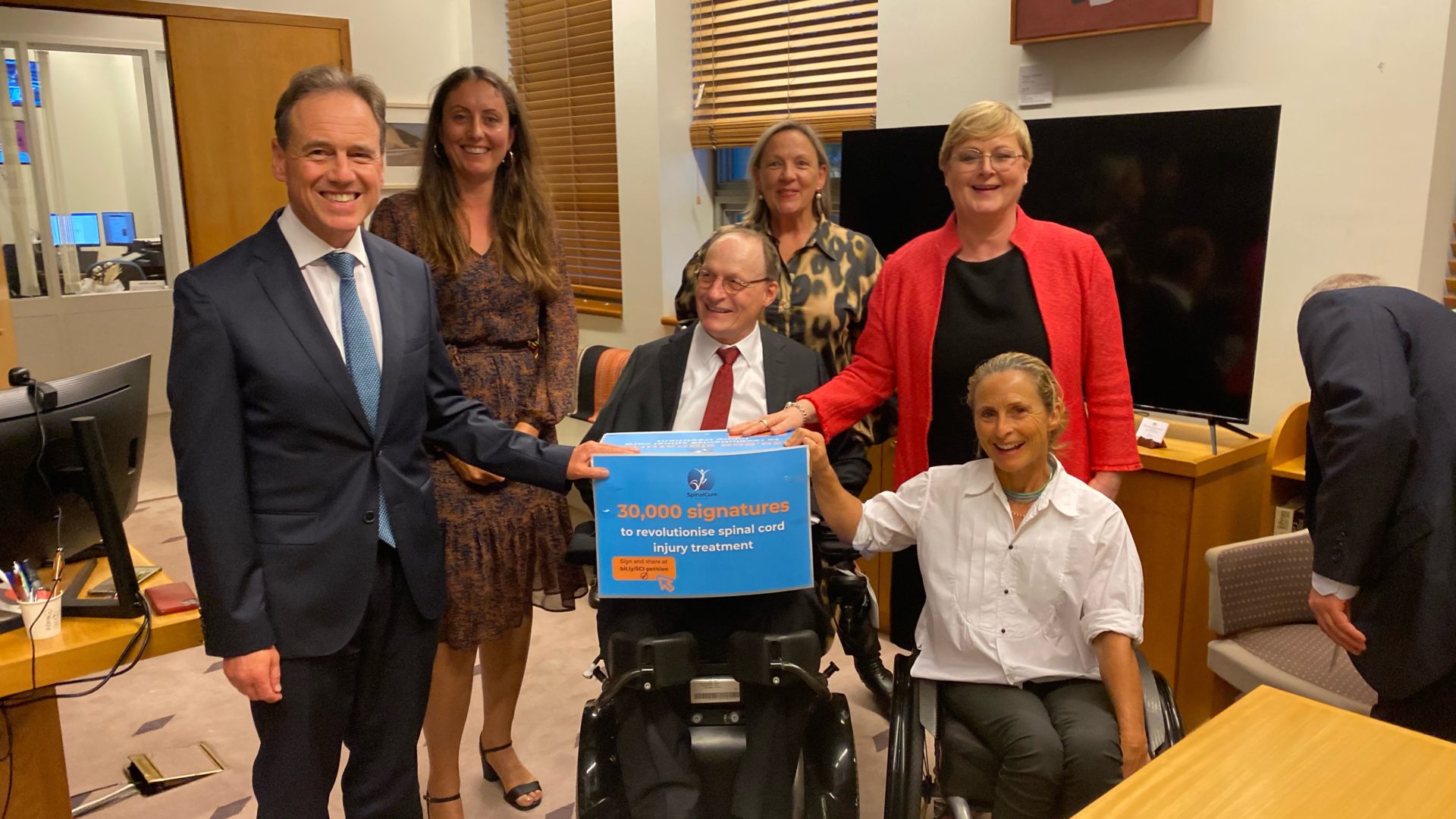Video by @cambloom
Join us on the Project Spark journey and support our campaign to transform the lives of people with spinal cord injury.
Sign up to follow Project Spark
Read the full story:
On Wednesday 30 March, Minister Greg Hunt accepted SpinalCure Australia’s 30,000-strong petition calling on the Federal Government to commit to funding neurostimulation research that could restore life-changing function to Australians with spinal cord injury within the next five years.
Off the back of several years of advocacy and thanks to our fantastic supporters, the Federal Government has created a grants program specifically for neurostimulation of up to $10m to improve outcomes for people with spinal cord injury.
“We’re really pleased to see that neurostimulation research has been elevated to the Government funding agenda for the first time in Australia’s history,” said Kathryn Borkovic, CEO, SpinalCure.
“This demonstrates that the Federal Government views neurostimulation as a leading pathway through which outcomes for Australians with spinal cord injury could be greatly improved in the short term.
“We thank all the petition signers who helped us get to Canberra and demonstrate the support across Australia for cure-related spinal cord injury research.
“Whilst this is a great start, this research project—called Project Spark—is a $46m project which could substantially reduce the annual $3.7b cost to the economy, and could change the lives of Australians with spinal cord injury within the next five years.
“We will continue to work with both sides of federal politics, state governments, community and philanthropists to secure the full funds required to make this Project a reality,” she added.
Alex Richter, SpinalCure Community Ambassador and the ‘face’ of our petition campaign said:
“While someone with a spinal cord injury can live a fulfilling
life, so many daily struggles would be solved through gaining even the smallest amount of function back. Whether it be better hand function to be able to write with a pen, or to be able to get myself out of bed in the morning, would have a huge impact on my, and every other quadriplegic’s, life.
“This new grant stream is an important step forward—with the right funding, research in Australia right now means it is very possible for there to be some sort of cure within my lifetime, whether it helps improve bladder or bowel function, or means that someone who sustains a spinal-cord injury could walk out of hospital without needing 10 months of rehab.”
What is neurostimulation?
Spinal cord neurostimulation, coupled with intensive exercise, aims to connect the brain and the spinal cord over the injury—almost like a jump-start for nerve connections. Some people who have received the treatment in studies overseas have been able to walk for the first time since the injury. Read more…
What is Project Spark?
Project Spark—so-called because of its potential to revolutionalise spinal cord injury, will build on the current ‘eWALK’ clinical trial based at Neuroscience Research Australia (NeuRA), Sydney, with additional clinical trials for different spinal cord injury types and bodily functions, plus in-home and in-community studies across five states of Australia.
Follow the Project Spark journey and support our campaign to transform the lives of people with spinal cord injury.
Sign up to follow Project Spark

